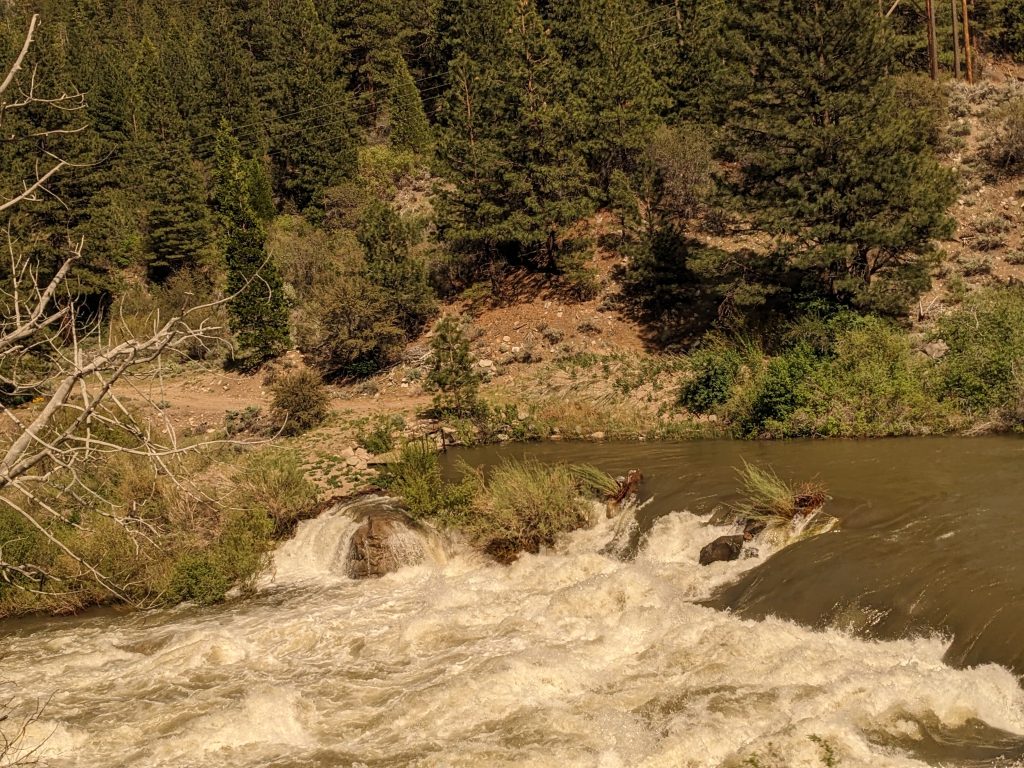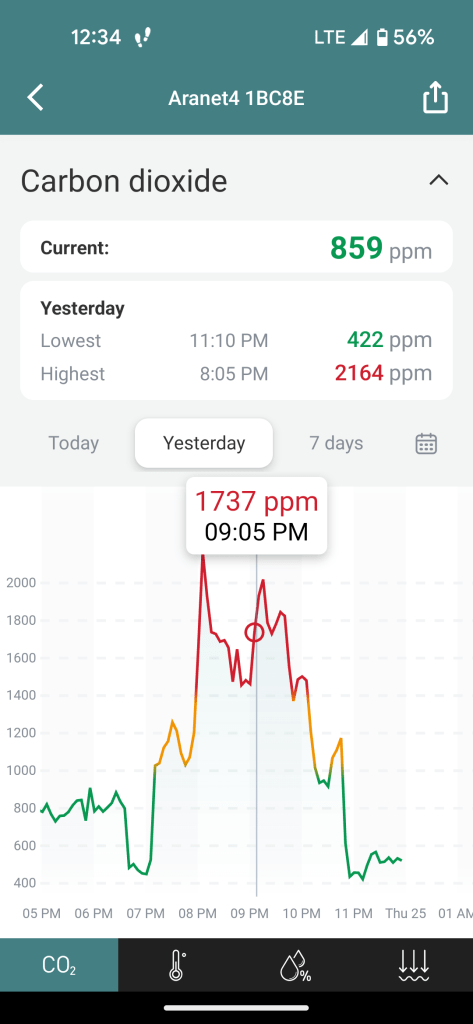I have just taken a 2,000 mile train trip from Oakland, California, to Chicago, followed by a bus ride from Chicago to Madison, Wisconsin, to attend WisCon. Next week I’ll have some WisCon tales, but this week the joys and travails of travel in the United States are on my mind.
First of all, Amtrak’s California Zephyr is set up to take passengers through both the Sierras in eastern California and the Rockies in Colorado. So much of the scenery is drop dead gorgeous. Here’s a shot from the Sierras to show you what I mean.

Even after all the development and expansion in the United States, not to mention the amount of mismanagement of our lands, we still have a beautiful country. And the people who plan the Amtrak routes across the west have set up schedules that give you all the best views.
You get to sit on the train and watch the beauty go by. You don’t get the details you see when hiking, but you get the big picture in all its glory.
There are back roads throughout the country where you can drive and get views like this, but the nice thing about the train is that someone else is paying attention to where you’re going. All you have to do is look.
And by the way, the western United States is as green as I’ve ever seen it this year. Even the desert had lots of green spots and blooming flowers. There’s still snow at higher altitudes. This was a northern route train, of course, though I know the Southern California desert is also very green.
It’s hard not to just take pleasure in that, even knowing that the drought isn’t over and how much damage was caused by the winter rains. I don’t think we’ll ever again have the luxury of not worrying about drought, flooding, and other weather disasters brought on or amplified by climate change, but I’m not going to stop enjoying beauty wherever I can see it.
And you can see it by train.
That’s the joy. The downside of it is that the trip from Oakland to Chicago takes 52 hours, from Monday morning until Wednesday afternoon. That’s 52 hours if the train is on time. Ours was about 4 hours late.
If you travel by train, especially by long distance train, you learn to build in time for the delays. The major causes of our delays were:
- a foolish driver in Reno, Nevada, who decided to try to get around a traffic jam by driving on the train tracks and got stuck. We waited about an hour for a wrecker to get the vehicle out of our way. Fortunately, the system worked and we didn’t crash into him.
- something wrong on the track a couple of hours before getting to Denver. Again, the system caught the problem, which was apparently caused by the sudden change from cold to warm temperatures and/or all the water from the snow melt warped something out of place. The repair person had to bring in tools and equipment and fix it and it wasn’t in a very accessible location. That took at least another hour.
- I suspect those two delays caused us to have to sit and wait for other trains more than we might have usually.
But even without delays, 52 hours is a long time to take to go 2,000 miles or so. Yes, the train has to stop in a lot of places (that’s part of the point of trains) and yes, the west is full of mountains and some of those grades require slow travel, but still. We probably averaged 40 miles an hour.
There are no high speed trains in the United States. The fastest ones I know of run between Washington, DC, and New York City and they take about 3 hours to go about 200 miles.
Other countries have high speed rail. Other countries have a lot of rail with a lot of connections. It is one of the curses of the United States that so much of the western part of our country grew rapidly alongside the automobile (even though trains were one of the things that opened the west up to settlement about 50 years earlier).
The people who take the train, especially those who spring for the roomettes (as I did) or the even pricier sleeper cars, really love traveling that way. But there are always glitches, because we haven’t kept up the system.
Actually, there seem to be problems with all of our systems. Our interstate highway system, which was supposed to make everything easy, is always clogged with traffic. Air travel seems to get more and more unpleasant and, as with the trains, the planes often don’t go where you’re going very easily.
I’ve already written too many words on this, so I won’t go off on why our systems are so screwed up. But I do want to add one more thing.
To actually get to Madison, I had to take a bus from Chicago. There’s a reasonable bus system built for that. It takes people back and forth from the Chicago airports and Amtrak to Madison and other places in southern Wisconsin. It works well, though it’s not as comfortable as a train (trains no longer go to Madison).
But the bus, unlike the train, had a terrible ventilation system. The level of carbon dioxide on the bus — a well air-conditioned bus — never got below 1000 ppm and was often above 2000. Here’s what my meter said:

The first green levels were on the train. The ones about 7 pm were waiting outside for the bus. The green levels at the end were walking from the bus to my hotel.
There are two problems with carbon dioxide at this level. One is that the higher it gets, and especially when it gets above 1500 ppm or so, it affects our cognition. It makes us duller.
But the other problem is that when carbon dioxide levels are this high, we are all breathing each other’s lung secretions. That means carbon dioxide levels are a good proxy for determining how risky a space is for spreading airborne diseases like Covid. If anyone on that bus had Covid or another airborne contagious disease, everyone would breathe it in.
I wore a mask. (Actually, I wore two.) No one else did.
But this is a systems problem, not an “everyone should behave differently” problem. The bus needs to bring in outside air as part of its ventilation system. The technology exists, but the bus company hasn’t done anything about it.
I look at systems failures like this and realize once again why Covid is still with us and why so many people seem to be sick all the time.
I love my beautiful country. I despair at its systems.

One day I’m going to take a long train trip across country. I might even get my husband to go with me (he loves trains with the enthusiasm of his interior 7-year-old). I envy you your trip.
On the other hand, having once taken a bus from London to Athens (and back again) I have had enough bus travel for a lifetime.
Have a magnificent Wiscon.
Do it. Even with its flaws, that cross-country train from Oakland to Chicago goes through glorious country. There’s also the Coast Starlight, which you can take down to Los Angeles or north to Seattle. And one of these days I’m going to take the Empire Builder, which goes from both Portland and Seattle (it combines the two in Spokane) to Chicago. It goes by Glacier National Park. I think that’s even a stop where you can get off and visit the park.
A very long time ago, my sister and I took a bus from Houston to Santa Fe, New Mexico, a trip that involved spending hours in the Dallas bus station in the middle of the night. After that, we turned to hitchhiking, which probably wasn’t as safe, but was certainly a lot more interesting. Buses are useful for making connections (as in getting to Madison from Chicago), but they are never my choice.